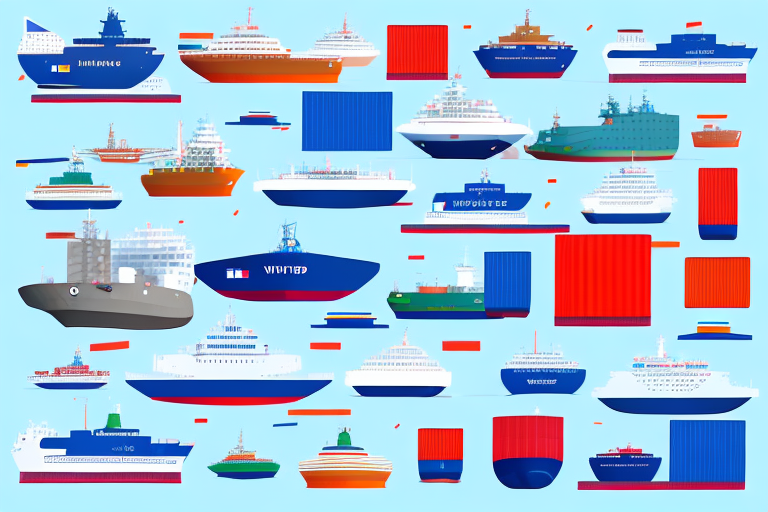Understanding Your Shipping Needs
Choosing the right shipping carrier begins with a clear understanding of your shipping requirements. Assess the size and weight of your packages, the distance they need to travel, and your desired shipping timeframe. Additionally, consider the types of products you are shipping, as some carriers specialize in specific items, such as fragile goods or hazardous materials.
Package Size and Weight
Evaluate the dimensions and weight of your typical shipments. Larger or heavier packages may incur higher shipping costs and may be limited by certain carriers. Understanding these factors helps in selecting a carrier that can accommodate your specific package requirements efficiently.
Shipping Distance and Timeframe
Determine whether you are shipping domestically, internationally, or both. Domestic shipments may prioritize speed and cost, while international shipping requires consideration of customs regulations and longer delivery times. Establishing your shipping timeframe ensures that you choose a carrier capable of meeting your deadlines.
Product Types
Identify the nature of the products you are shipping. Carriers may have special provisions for fragile items, perishable goods, or hazardous materials. Selecting a carrier experienced in handling your specific product types can reduce the risk of damage and ensure compliance with relevant regulations.
Cost Considerations
Shipping costs can significantly impact your profit margins. Compare pricing structures among carriers, including base rates, surcharges, and potential discounts for bulk shipments or frequent use. Utilizing cost-effective shipping solutions without compromising quality is essential for maintaining profitability.
Evaluating Shipping Carrier Options
With a clear understanding of your shipping needs, the next step is to evaluate potential carriers based on several key factors.
Shipping Rates and Services
Compare the shipping rates of different carriers, taking into account any additional fees such as surcharges for oversized packages or remote area deliveries. Additionally, assess the range of services offered, including express shipping, standard delivery, and specialty services tailored to specific industries.
Carrier Reputation and Customer Service
A carrier's reputation is a reliable indicator of their reliability and service quality. Research online reviews, industry ratings, and customer testimonials to gauge the carrier’s performance. High on-time delivery rates and positive customer feedback are essential for ensuring a smooth shipping experience.
Insurance and Tracking Options
Ensure that the carrier provides adequate shipping insurance to protect against losses or damages. Comprehensive tracking options, such as real-time GPS tracking and mobile app notifications, offer transparency and allow both you and your customers to monitor shipments effectively.
Technology and Sustainability
Modern shipping solutions leverage advanced technology for efficiency and tracking. Additionally, sustainability is becoming increasingly important; consider carriers that implement eco-friendly practices such as using electric vehicles, reducing packaging waste, or offsetting carbon emissions.
Comparing and Negotiating with Carriers
Once you've narrowed down your carrier options, it's time to compare their offerings in detail and negotiate favorable terms.
Rate Comparison and Negotiation
Conduct a thorough comparison of shipping rates and identify opportunities for negotiation. Carriers may offer discounts based on volume, contract length, or service bundling. Negotiating rates can lead to significant cost savings, especially for businesses with high shipping volumes.
Contracts and Partnerships
Review the terms and conditions of carrier contracts carefully. Look for flexibility in service options, favorable cancellation policies, and support for scaling your shipping needs as your business grows. Building strong partnerships with multiple carriers can also provide broader shipping options and enhance reliability.
International Shipping Considerations
Expanding your shipping operations internationally introduces additional complexities that require careful planning.
Customs Regulations and Compliance
International shipping involves navigating customs regulations, duties, and taxes. Partner with carriers experienced in international logistics to ensure compliance and smooth transit across borders. Familiarize yourself with the import/export regulations of the countries you are shipping to.
Packaging and Labeling Requirements
Different countries have specific packaging and labeling standards. Ensure that your packaging meets these requirements to prevent delays or rejection at customs. Accurate labeling with necessary information, such as product descriptions and country of origin, is crucial for efficient processing.
Streamlining Your Shipping Process
Efficiency in your shipping operations can lead to cost savings and improved customer satisfaction.
Shipping Software and Aggregators
Utilize shipping software or aggregators to automate and manage your shipping processes. These tools can provide access to multiple carriers, streamline order fulfillment, and offer comprehensive tracking and reporting features. [Explore Shipping Software Options](https://www.example.com/shipping-software) for more information.
Packaging Optimization
Optimize your packaging to reduce costs and minimize damage. Using appropriately sized boxes and protective materials can decrease shipping expenses and enhance product safety during transit. Consider eco-friendly packaging options to appeal to environmentally conscious customers.
Preparing Packages for Shipment
Properly preparing your packages is essential for ensuring they arrive in good condition. Use quality packing materials, clearly label packages, and adhere to carrier-specific guidelines to avoid delays and additional fees. Including a packing slip or invoice inside the package can help prevent confusion if the outer label is damaged or lost.
Managing Returns and Customer Feedback
Effective management of returns and customer feedback is vital for maintaining customer satisfaction and improving your shipping processes.
Return Policies
Establish clear and transparent return policies to handle returns and exchanges efficiently. Communicate these policies to your customers to set expectations and reduce confusion.
Handling Complaints
Address customer complaints promptly and professionally. Work with your carrier to resolve issues such as lost or damaged packages, and keep customers informed throughout the resolution process to maintain trust and loyalty.
Feedback for Improvement
Collect and analyze customer feedback to identify common issues and areas for improvement in your shipping and customer service processes. Implementing changes based on feedback can reduce future returns and enhance overall customer satisfaction.
Tracking and Analyzing Shipping Performance
Monitoring your shipping performance is essential for identifying opportunities to optimize and reduce costs.
Cost Tracking
Regularly track shipping costs to identify trends and areas where expenses can be minimized. Analyzing cost data helps in making informed decisions about carrier selection and shipping strategies.
Performance Metrics
Evaluate key performance indicators (KPIs) such as on-time delivery rates, package integrity, and customer satisfaction levels. Tracking these metrics ensures that your shipping operations are meeting your business goals and customer expectations.
Adapting to Industry Changes
The shipping industry is dynamic, with ongoing changes in regulations, carrier services, and technological advancements. Stay informed about industry trends by attending events, subscribing to reputable publications, and networking with other business owners. Adapting to these changes proactively ensures that your shipping processes remain efficient and compliant.
Conclusion: Finding the Perfect Fit for Your Business
Selecting the right shipping carrier is a critical decision that can significantly impact your business's success. By thoroughly understanding your shipping needs, evaluating carrier options carefully, and continuously monitoring performance, you can choose a carrier that offers reliable, cost-effective, and efficient shipping solutions. As your business grows, remain flexible and open to reassessing your shipping strategy to ensure it continues to meet your evolving requirements.




















